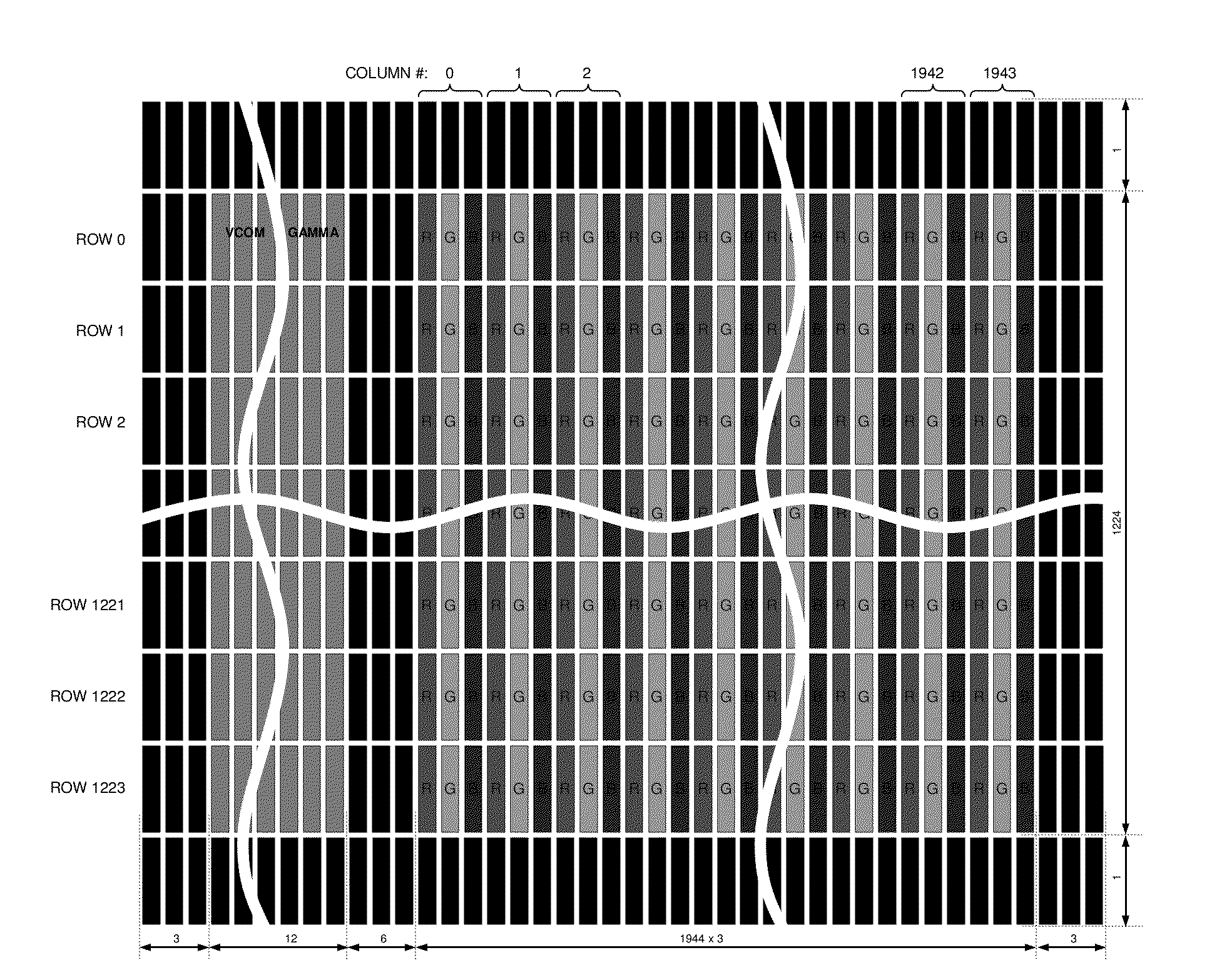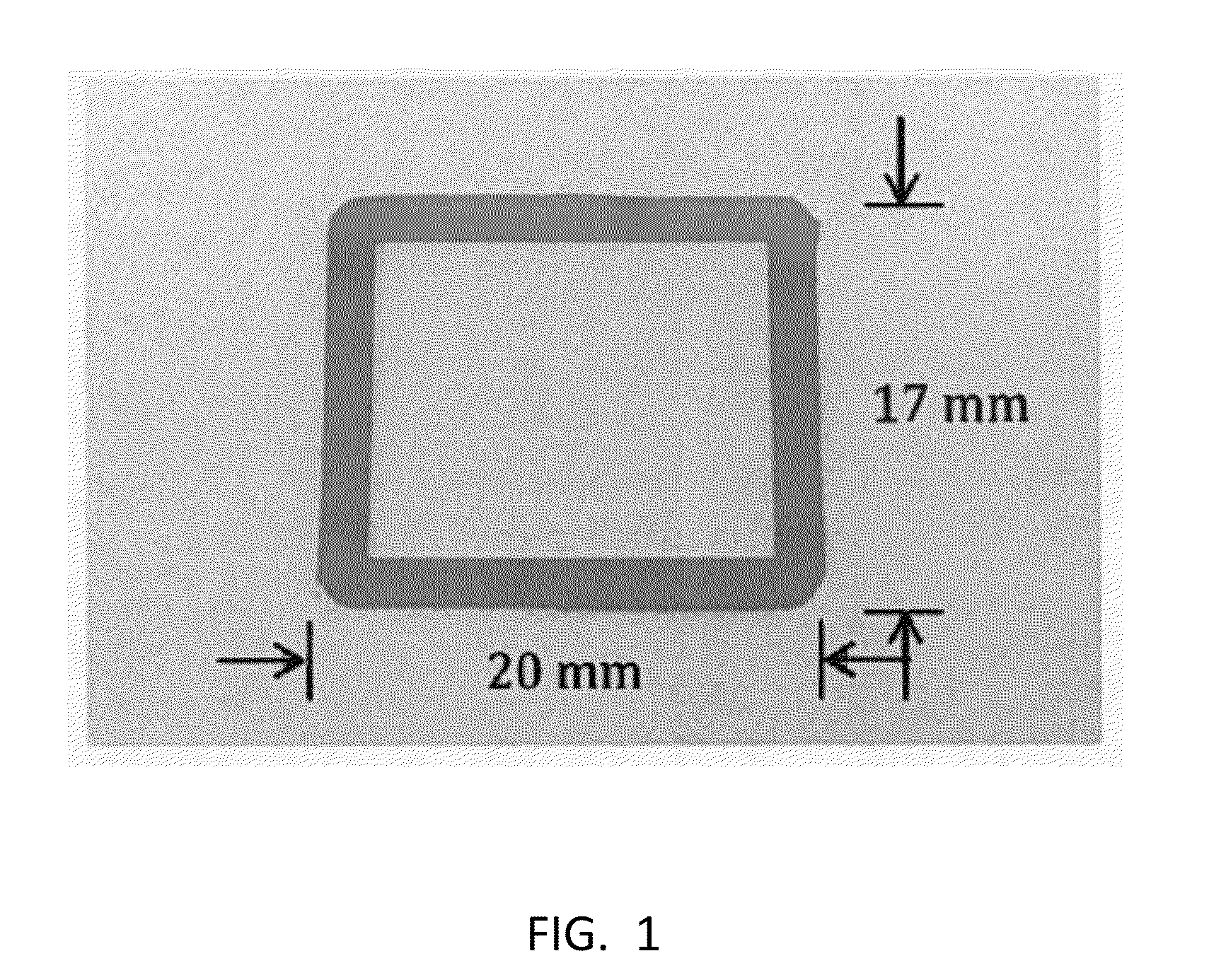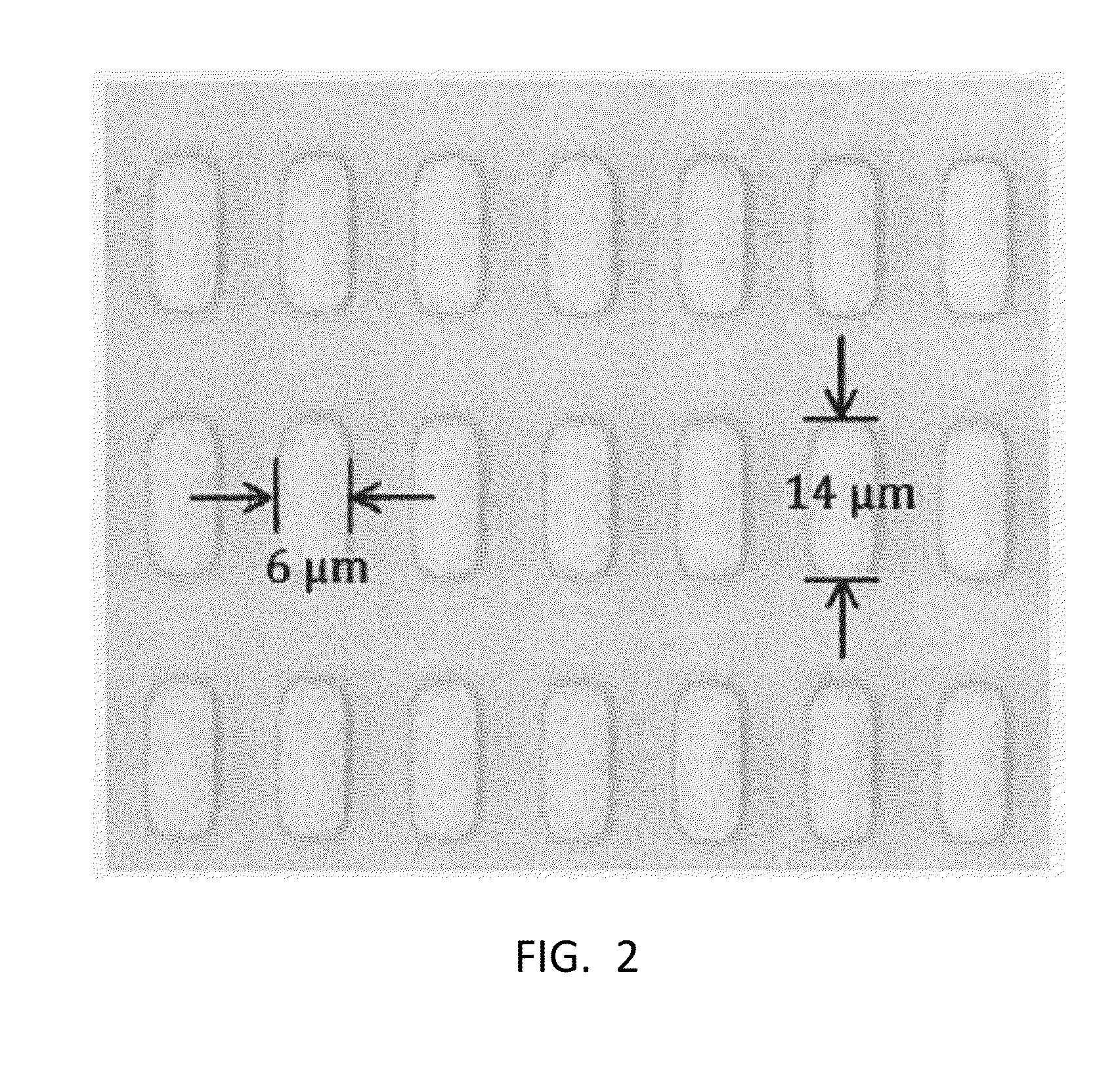Patterning of OLED materials
a technology of oled materials and patterns, applied in the direction of organic semiconductor devices, vacuum evaporation coating, thermoelectric devices, etc., can solve the problem that conventional patterning using lithography is not possible with organic materials, and achieve the effect of high resolution and higher resolution
- Summary
- Abstract
- Description
- Claims
- Application Information
AI Technical Summary
Benefits of technology
Problems solved by technology
Method used
Image
Examples
example 1
[0115]In this example, fabrication of a shadow mask, deposition of color emitter materials to form a pattern of color emitter structures, and OLED devices having patterned structures of color emitter structures is described.
[0116]Deposition Tool. The tool used for deposition is a rectangular chamber that is 20×19×19 inch and uses an Alcatel 5400 turbo molecular vacuum pump that can reach base pressures of about 5×10−6 Torr. The depositions performed for this work uses pressures of about 10−5 Torr which gives a mean free path of around 4 m, much greater than the separation of the source to substrate. This allows the depositions to be a function of geometry. In this environment, the organic materials are evaporated or sublimated via resistive heating powered by a Sorensen DCS8-125, where the custom built boats utilizes up to 8 W of power. Deposition rates are determined by quartz crystal monitors that are connected to an “Inficon SQM-242 Thin Film Deposition Controller Card”. An image...
PUM
| Property | Measurement | Unit |
|---|---|---|
| sizes | aaaaa | aaaaa |
| size | aaaaa | aaaaa |
| size | aaaaa | aaaaa |
Abstract
Description
Claims
Application Information
 Login to View More
Login to View More - R&D
- Intellectual Property
- Life Sciences
- Materials
- Tech Scout
- Unparalleled Data Quality
- Higher Quality Content
- 60% Fewer Hallucinations
Browse by: Latest US Patents, China's latest patents, Technical Efficacy Thesaurus, Application Domain, Technology Topic, Popular Technical Reports.
© 2025 PatSnap. All rights reserved.Legal|Privacy policy|Modern Slavery Act Transparency Statement|Sitemap|About US| Contact US: help@patsnap.com



